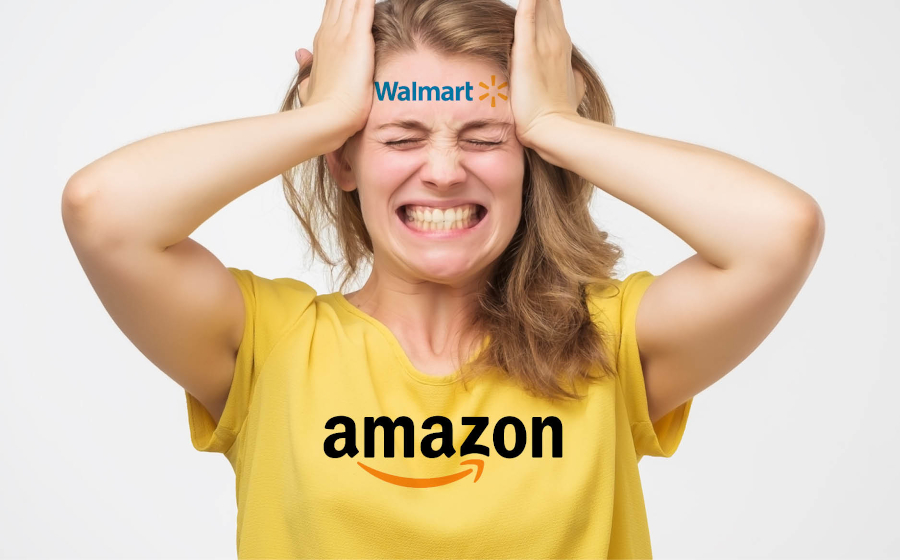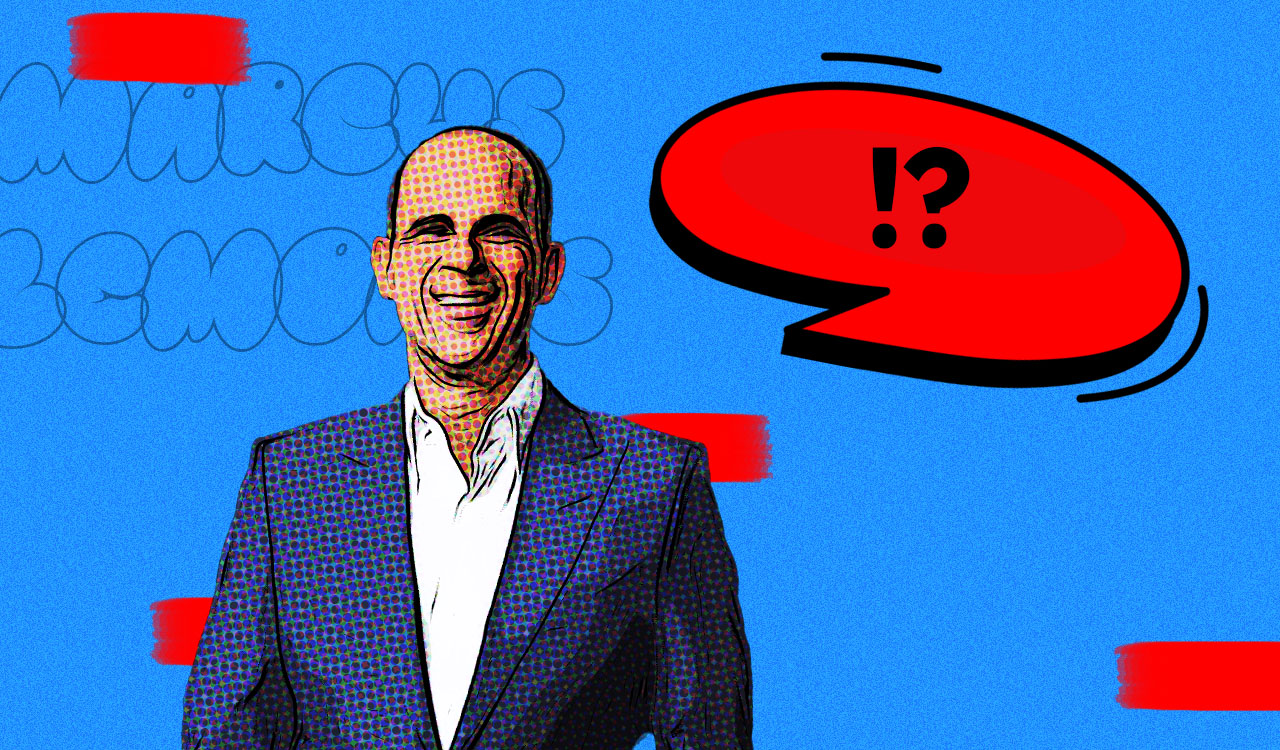Let me start with Walmart\’s Q3 2019 results, which by now, you are aware of. I will repeat the highlights only as a segue way to a couple of other signals that Amazon must be noticing that their Walmart headache will likely turn into a migraine.
Signal #1
First of all, a reminder. Walmart still operates in the real world where they are expected to make money. What a novel idea. Nevertheless, even while they are investing billions in transforming their business model to succeed in the so-called \”new world,\” they continue to make money. Their online sales grew 41 percent, and same-store sales were up 3.2 percent (vs. 3.1 expected). And while revenues took a small dip from $128.65 billion expected, to $127.99, earnings per share came in at $1.16 vs. $1.09 expected. This performance marked 21 quarters of growth in the U.S.
Oh, and by the way, the 41 percent online growth was largely attributed to a strong grocery business. Keep this in mind as we examine the signals that the migraine is on its way.
Signal #2
First Insight conducted three consumer surveys of 1000 people each in December 2017, September 2018 and last September. The respondents included shoppers with and without Prime membership. The results revealed that less shopping is taking place on Amazon and consumers are favoring Walmart. What!!?? How can that be?
Greg Petro, CEO of First Insight, made this shocking observation: \”The excitement of the Amazon box coming to your house is kind of dwindling off. I think the novelty of Amazon is wearing off.\”
Here are some of the metrics from the study:
- The frequency of people buying items on Amazon six times or more per month has dropped to 40 percent this year from 80 percent in 2017.
- A majority of 55 percent said they prefer to shop at Walmart versus Amazon, up from about 47 percent a year earlier.
- The percentage of people who favor Amazon has dropped to 45 percent from about 53 percent in 2018.
- According to Amazon, they have more than 100 million Prime members worldwide. However, First Insight states that there is a decline in the number of sign-ups. The research found that 52 percent of the respondents were members in 2019, down from 59 percent from the prior year.
Could these findings be a result of the billions of dollars Walmart has been investing in e-commerce, even while making money? You betcha! Could this be a signal that Walmart may be winning the delivery battle against Amazon? You betcha! Could this be a result of Walmart\’s dominance in the grocery sector with roughly a whopping 30 percent share of market and growing? Plus leveraging its newly found e-commerce strength and 2700 grocery pick-up locations, on top of its InHome grocery delivery membership program (for $19.95 a month)? You betcha!
Apparently, Walmart\’s grocery delivery advantage got under Amazon\’s skin. They announced plans last month to start delivering grocery products for free within a two-hour window to all Prime members living in the 2000 regions eligible for the service.
How can Walmart continue to invest billions and still turn a profit? Because they know how to run a retail operation (the biggest in the world, at that). Yes, profitable growth, even as Amazon\’s Q3 earnings report was short of analysts\’ expectations.
First Insight\’s Petro also said, ?Walmart\’s speed is allowing them to leapfrog and get hyper-competitive with Amazon in a short period of time.\”
Signal #3 – The Elephant in the Room
So, Amazon must feel the heat, or sticking with the metaphor, feeling that the headache called Walmart is becoming more painful.
And I believe the elephant in the room is the migraine-maker. Walmart\’s grocery dominance and their ability to leverage both the superior physical and digital integration (because of sheer size) accelerates their growth before Amazon even gets out of the gate.
And consider this enormous advantage over Amazon: The average grocery shopper visits a grocery store 1.6 times per week. So, when the average Walmart shopper taps into the digital, or walks into the physical grocery store, I wonder how many cross over the digital or physical aisles to purchase additional and more profitable goods? Talk about synergy? You betcha!
Jeff Bezos may have seen and understood the Walmart elephant early on when he declared that Amazon had to become dominant (or at least a major player) in apparel and grocery. And I believe his acquisition of Whole Foods and his roll-out of Amazon Go were attempts at finding the formula or pathway to become competitive with the elephant. The elephant (Walmart) has a 30 percent market share in a low margin business which accounts for 56 percent of Walmart\’s US revenues, And Walmart continues to make money. Sorry Jeff, but your initial forays into physical retail isn\’t leading to a competitive model against Walmart.
Amazon\’s Supermarket Folly
But now Bezos finally gets it. Even though Amazon is late to the party, they are opening a supermarket in the Woodland Hills neighborhood of LA next year. And it sounds just like … well, a supermarket. I guess this is a test? Or is it going to be another differentiated tech-infused supermarket like the Amazon Go convenience stores, that they will roll out and serve up against Walmart, Kroger and Costco, all of whom already have thousands of stores across the US and well-honed supply chains.
I don\’t think Jeff Bezos is that suicidal. He must recognize that short of some futuristic whiz-bang techno supermarket, the billions of dollars and years it would take to roll out hundreds of stores to reach even competitive parity would be insurmountable. And he also knows that those three giants are not going to be sitting still waiting around for Amazon. Furthermore, even if the genius of Amazon\’s tech wizards do come up with some whiz-bang ideas, the giants will just copy them and place them in their already dominant models.
Lastly, and perhaps even more of a barrier for Amazon, is its reputation among vendors and the level of trust needed among its suppliers to support their growth strategy. Even though about 60 percent of Amazon\’s current marketplace revenues come from third-party vendors, many of them have complained that Amazon owns all of the transactional data, enabling Amazon to copy products for their own private brands. We\’ve all experienced our online search for a specific product or brand, and Amazon pops up with one of their own brands as a lower cost option. Nike recently pulled out of a special program with Amazon, citing not only lack of control over their brand image, but they detected counterfeiting as well.
This can\’t be surprising, as Amazon operated out of P&G distribution centers in 2013 to more easily and efficiently ship the orders for some of P&G\’s more established and popular brands. This program gave Amazon a competitive delivery advantage, but Amazon then copied those products and launched a number of their own household product brands.
Another barrier to the success of Amazon\’s supermarket move is that while vendors feel the necessity to be on its digital marketplace for its sheer size and the fact that it owns over half of all online sales, its embryonic supermarket launch from scratch does not hold the negotiating clout that the giants do And then there\’s the issue of trust.
And lastly, what does Amazon know about running a mainstream supermarket business? In my opinion, nada.
Another Trojan Horse?
Bezos is a genius, but I\’m just curious about his strategy. I predicted after Amazon\’s deal with Kohl\’s to set up and operate in-store shops that they would eventually acquire Kohl\’s 1155 off-mall selling and distribution centers, giving them an overnight major player position in apparel and general merchandise. TRR reporter Warren Shoulberg suggested another option for Amazon to rent rather than own. https://www.therobinreport.com/amazons-trojan-horse/ And recently, another TRR reporter, David Merrefield had another observation about Amazon acquiring smaller chains around the country.
So, given all of these barriers against Amazon succeeding in the supermarket space, I will throw this audacious idea into the ring: With Amazon\’s market cap hovering around a trillion dollars – yes, a trillion – and Kroger at around $28 billion, go for it Jeff! Just acquire them.




